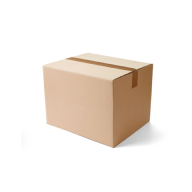HyFlex 70-114
4.8 / 5
Product description
Description
Elevated comfort: HyFlex® 70-114 arm protection sleeves feature high-tech 100% Kevlar® para-aramid short fibers and an automatic knit liner, providing wearers with outstanding comfort
Advanced defenses: Their blend of Kevlar® para-aramid short fibers also imparts excellent cut resistance capabilities, while ensuring contact heat protection up to 100°C/212°F
Enhanced features: In addition, these protective sleeves feature a practical thumb slot, for a secure fit and extra wrist protection
Recommended for
Press shop operations
Assembly & inspection of components
Applying sealers, touching up
Equipment repair & maintenance
Cutting glasses, sheets, panels
Seizing structural and body parts
Adjusting systems and screwing
Product Details
Antistatic: No
Length: 14" (356 Mm)
Width: One Size Fits All
Construction: Knitted
Cuff Style: Knitwrist
Gauge: 10
Liner Color: Yellow
Liner Material: Kevlar®
Silicone Free: Yes
Washing Temperature: 40 °C (104 °F)
About Cut Resistant Sleeve
Cut Resistant Sleeves provide essential arm protection against lacerations and abrasions in hazardous work environments. Made with specialized cut-resistant fibers, these durable arm coverings offer comfort and flexibility while safeguarding against workplace injuries in manufacturing, construction, and industrial settings.
- Cut Resistant
- Heat & Flame Resistance
- Machine Washable
- Hand Protection
Standards and labels
Ansell delivery terms
Free delivery for all Ansell products
787,81 €
Price per 12 packages (144 pairs)
5,47 € / pair
Free delivery
A carton contains 12 packages (144 pairs)



